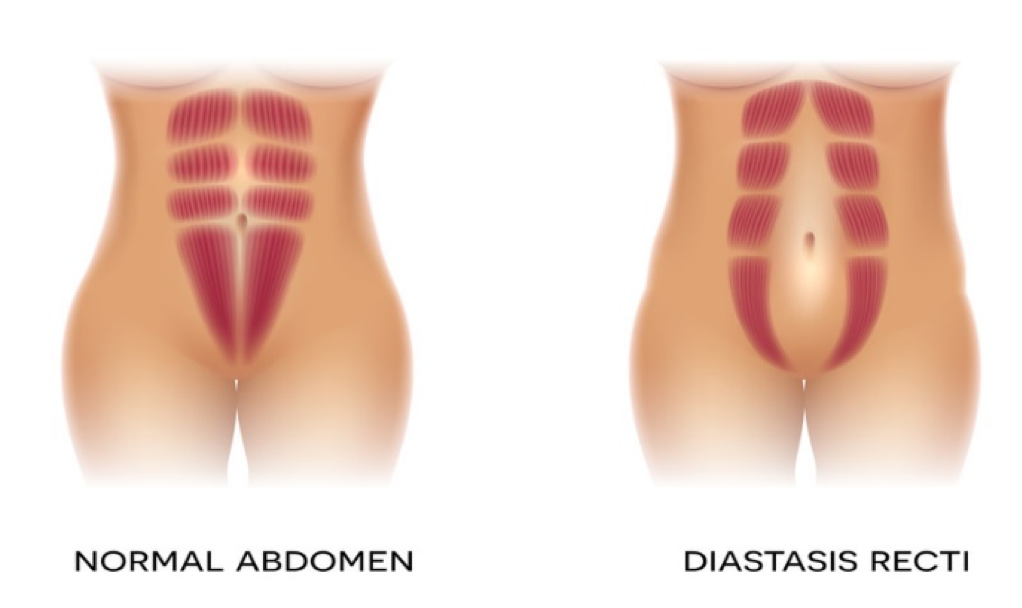Diastasis Recti
What is Diastasis Recti?
Diastasis recti is often described as an abnormal separation of the rectus abdominis (AKA “six-pack”) stomach muscles.
It can occur above, at or below the belly button, or for some it may occur through the entire length of the abdomen.
What causes this separation?
The rectus abdominis muscles are separated in to right and left sides, this is normal. Between the two sides is the linea alba. The linea alba is a fibrous structure that runs down the midline from the bottom of the chest bone down to the pelvis. It connects your ribcage to your pelvis and connects your abdominal muscles.
A diastasis involves a weakening, thinning and widening of the line alba.
What are the symptoms?
You may be able to see or feel a bulge down the midline (Toblerone effect) when you do activities such as sit ups, raising your legs or lifting
You may feel your abdominal muscles are weak
A protruding abdomen
Why have I developed a Diastasis Recti?
During pregnancy it is normal to develop a widening of the linea alba, this happens to everybody, in order to accommodate your growing baby.
After pregnancy this “gap” should resolve and return to normal, however in some women it doesn’t.
Research has shown that the gap spontaneously resolves up until 8 weeks post birth, after this point it is likely that it will not improve any further without intervention and careful rehabilitation.
Diastasis can also occur after weight gain, abdominal surgery and from overuse of abdominal muscles.
It can occur in men and women.
How can physiotherapy help?
As with all conditions, treatment is individualised to the patient and the problems they present with. However, the following treatments are often used successfully to reduce diastais recti.
Postural awareness
Body mechanics training
Relaxation
Manual therapy
Breathing exercises
Advice around abdominal supports
Pelvic floor rehabilitaitn
Graded exercises programme for abdominals and for global muscles
Soft tissue release
Scar massage/release
The aim is to restore normal mechanics and forces across the linea alba to allow it to gain improved tension and therefore to reduce the “gap”.

